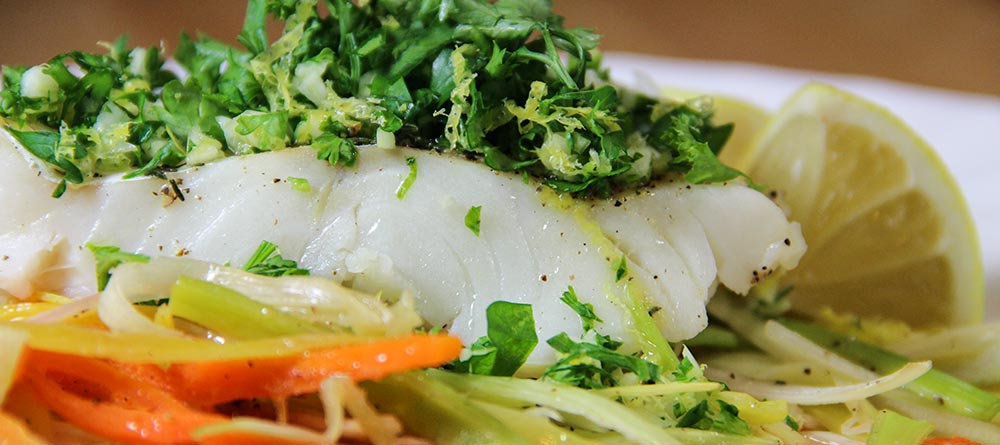
I must say, I’ve been developing some serious respect lately for those who try their hand at cooking. It’s not easy. Well, I suppose it’s been easy for me up to this point, but now that I’m taking things to the next level, I can see the challenges.
Do you want to know real challenge? Try cooking and taking pictures at the same time. That’s what I’ve been doing. If the kitchen wasn’t hot enough…
The recipe I prepared this afternoon is what I’d like to call “light.” I was originally going to suggest this one as the perfect something to prepare for date night with your spouse or a friend, but now that I’ve tasted it, I’m going to hold off on that suggestion. There’s garlic in this recipe and you can taste it. It would probably be better for lunch on the go or something like that. It’s sort of springy and vibrant. It’s really nice.
This is the first recipe, in a series of three, that I’ll be preparing from the Steaming & Poaching course at America’s Test Kitchen. At first glace, I thought this one would be a snap. But on further review, I discovered that there are quite a few steps. The creators managed to inject a lot of flavor in all the nooks and crannies. The garlic mixed with the butter and the herbs is tasty, to say the least. It’s not a terribly difficult dish to prepare, but there is some labor involved. Especially with breaking down the carrots and the leeks.
The goal with the recipe is to prep the ingredients in such a way so they properly steam through at the same rate as one another. Size consistency is huge with this. If something is too large, it may not cook all the way. If it’s too small, it may overcook. If everything is prepped just right, you’ll end up with perfectly steamed ingredients that are a joy to eat. Luckily, I managed success and everything turned out well enough.
Like I always do, I’ll go over the ingredients that are necessary below and after that, I’ll give you a step by step account of what I did in the kitchen to make this dish.
Ingredients
Serves: 4
4 Tablespoons Unsalted Butter
1 Lemon
2 Cloves of Garlic
1 Teaspoon Minced Fresh Thyme Leaves
Table Salt
Ground Black Pepper
2 Tablespoons Minced Fresh Parsley Leaves
2 Carrots
2 Leeks
4 Tablespoons Vermouth or Dry White Wine
4 6-Ounce Skinless Cod Fillets
Questions
Before I begin, I’d like to talk about and answer a few questions I had before I began cutting, chopping and cooking. I’ll list these questions below.
These thyme leaves are so small. Do I really need to mince them?
Yes. It’s inside each leaf that the flavor resides. Even though you can most likely get away with using whole thyme leaves in this recipe, it’s the mincing that allows the herb flavor to leach into the butter mixture. It’ll be worth it in the end.
I’m getting tired of buying fresh herbs. Can’t I just substitute the fresh parsley for dried? Please?
Unfortunately, if you want to complete the recipe the way it’s written, you’ll need to use fresh parsley. The parsley goes on top of the fish after it’s cooked, so it would look awfully strange to sprinkle a dried herb in that location. Especially if you’re planning on taking pictures of the final product for a blog.
There are so many type of white wines out there. Which ones are the best for cooking?
The goal of adding white wine to cooking is to inject balance, fruit and acidity into your cooking. The only way to do this is to find and use the appropriate ingredient. Something versatile, such a dry, crisp white wine is perfect. Personally, I like cooking with Pinot Grigio (I’ve always enjoyed drinking this wine), but Sauvignon Blanc and Chardonnay are very good as well.
I know I need evenly sized pieces of cod for this recipe. The thing is, whenever I purchase this fish, the filet always starts off thick, but gets skinnier towards the tail. How can I overcome this?
The trick here is to purchase multiple packages of cod. My grocery store usually has filets that weigh around one pound. In order to pull out 3 or 4 similarly sized pieces, I have to purchase more than one filet. Oftentimes, if you have a staffed seafood department at your grocer, you can have them section some filets for you. Or, you can work together with them to get what you’re after. The point is, don’t try to stretch what you have. Purchasing the proper ingredients for this type of dish is important.
Step-by-Step Instructions
In this section, I’m going to cover exactly what I did in the kitchen to prepare this dish. Most of the work was prep, so the time crunch and balancing act wasn’t as prevalent as it was in previous recipes. For some odd reason, that didn’t stop me from getting flustered and running all over the place. I think that has something to do with the photography. I’ll have to work that out in the future.
Soften the Butter
All that’s necessary for this step is to cut the 4 tablespoons of butter and set them out on the counter, or someplace somewhat warm (room temperature), for about 30 minutes. When it comes time to mix in the other ingredients, soft butter works much better than hard.
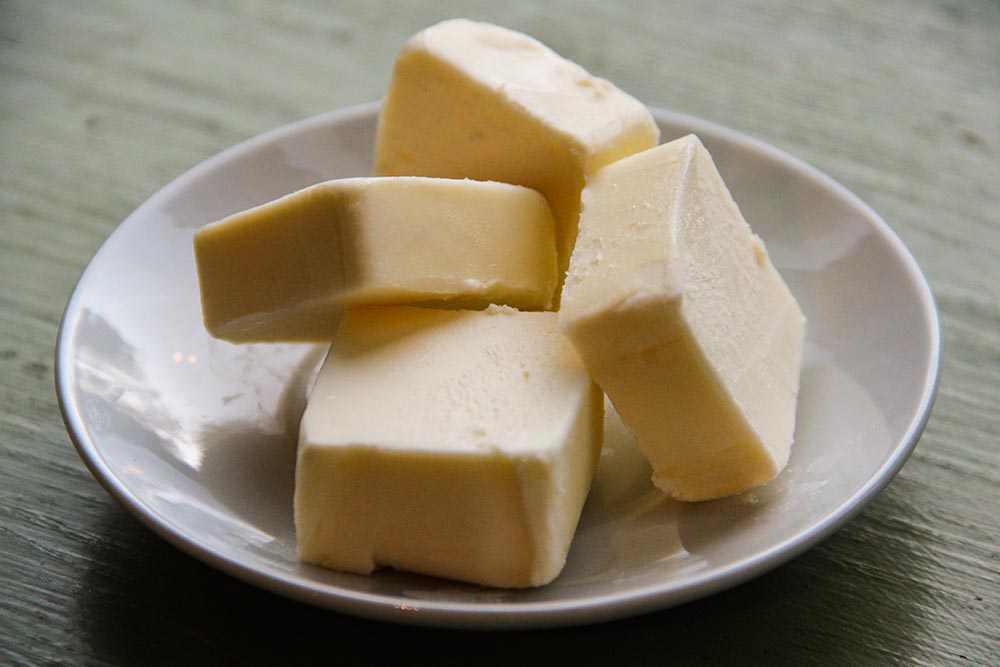
Grate Lemon Zest
Lemon zest is used for both the butter mixture and the final topping, so be sure to grate at least 1 1/4 teaspoons with a microplane or rasp grater.

Prepare Remaining Lemon
Since this recipe serves 4 and you want 2 lemon pieces per plate, cut the remaining lemon into 4 wedges and then each of those wedges in half. This will leave you with 8 pieces.
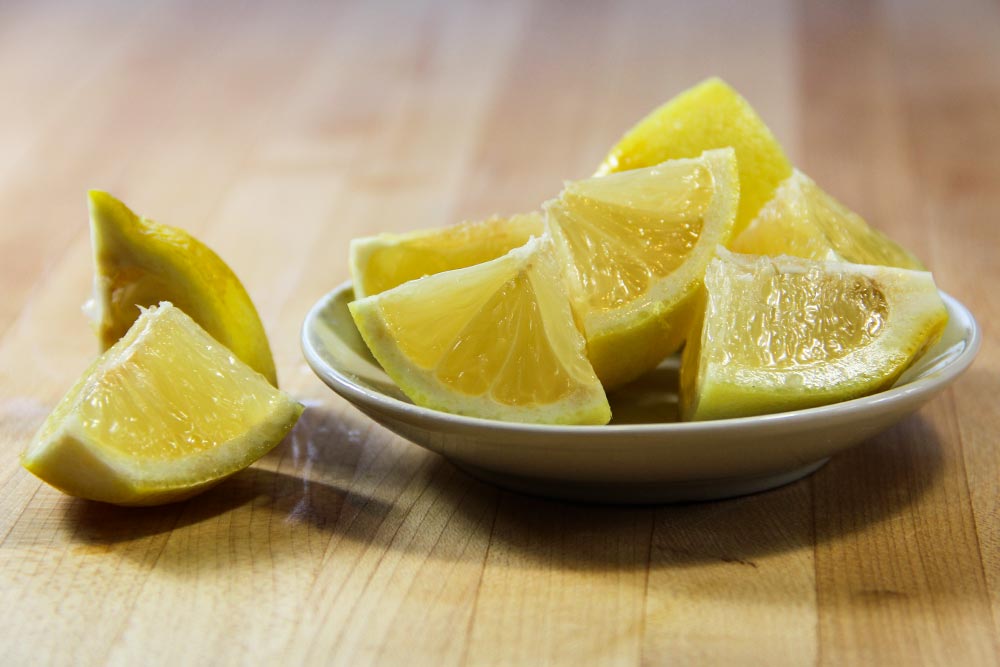
Mince Garlic
Mince 2 teaspoons worth of garlic. This should take approximately 2-3 cloves. I’ll explain what to do with them below (I deviate from the original recipe a bit). Like the above ingredients, set the minced garlic to the side for later use.
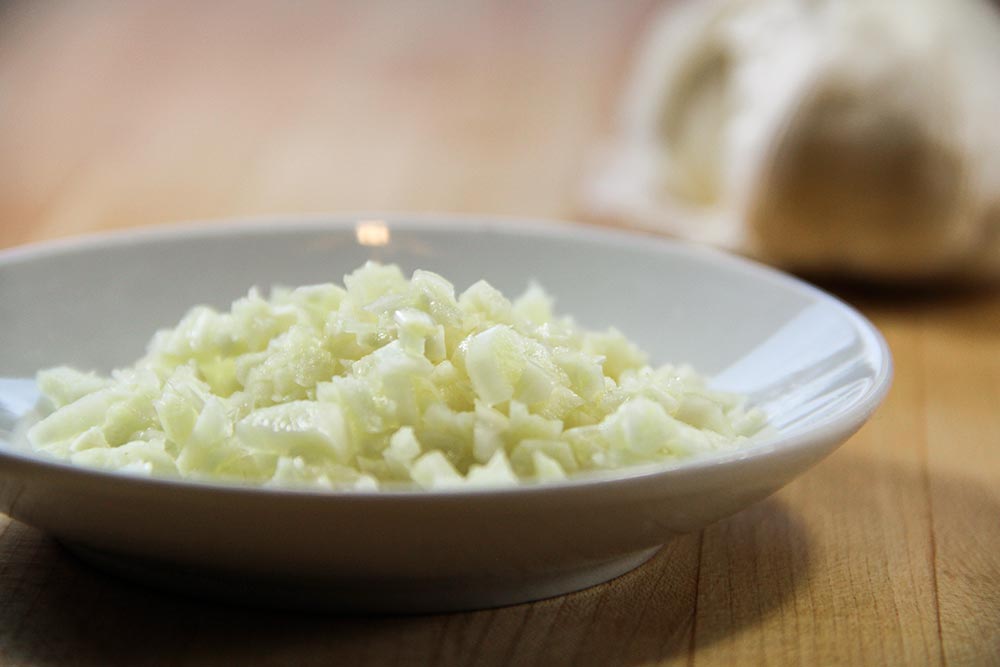
Mince Thyme
For this particular recipe, I purchased fresh thyme. In this case, and unlike with the parsley, you can get away with using dried thyme. It’s only added to the butter mixture that will melt into the fish, so it’s okay. If you do decide on using fresh, you’ll need to strip the leaves from their stems and then mince the leaves. For a tutorial on exactly how to strip the leaves, please take a look at this resource:
How To Strip Herbs off Their Stems
After that processing is finished, you’d go ahead and mince the herb like any other. When done, set aside. You’ll need 1 teaspoon worth.

Mince Parsley
For some reason, I really enjoy chopping and mincing fresh parsley. It may be because I’ve got a super sharp chef’s knife that glides right through. As I cut, the parsley breaks down and collapses.
For this step, I took a few pieces and removed the leaves from the stems. This is much easier than taking the same step with the thyme. When stripping the parsley, all it takes is a knife.
Once the leaves were removed, I chopped and then minced. I made enough to fill 2 tablespoons. The picture below is before the mincing and after the chopping.
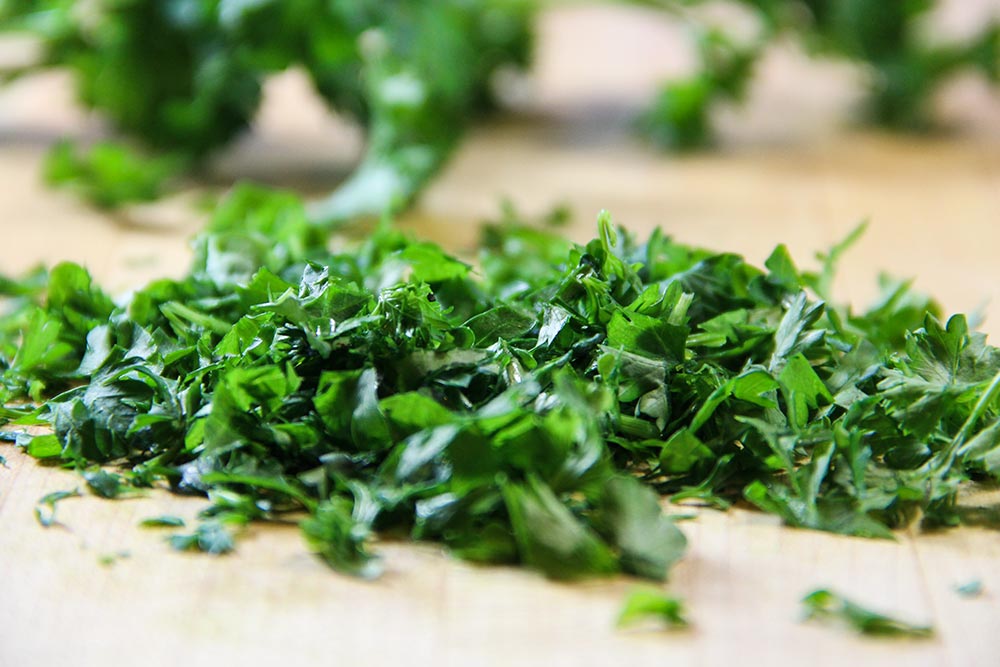
Julienne Carrots
For this step, I peeled both carrots and cut each one of them into thirds. After that, I julienned them. For some tips on how to julienne carrots, please take a look at this resource:
How To Prepare Julienne Carrots
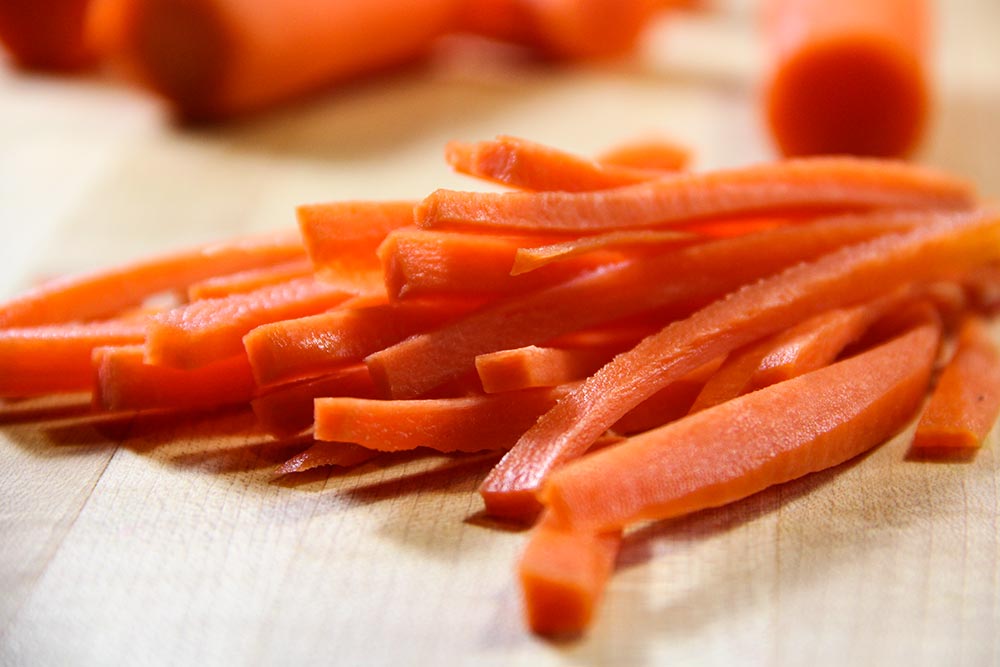
Clean & Julienne Leeks
This step is a bit more involved than the last. In this case, I cut the leeks in half vertically.
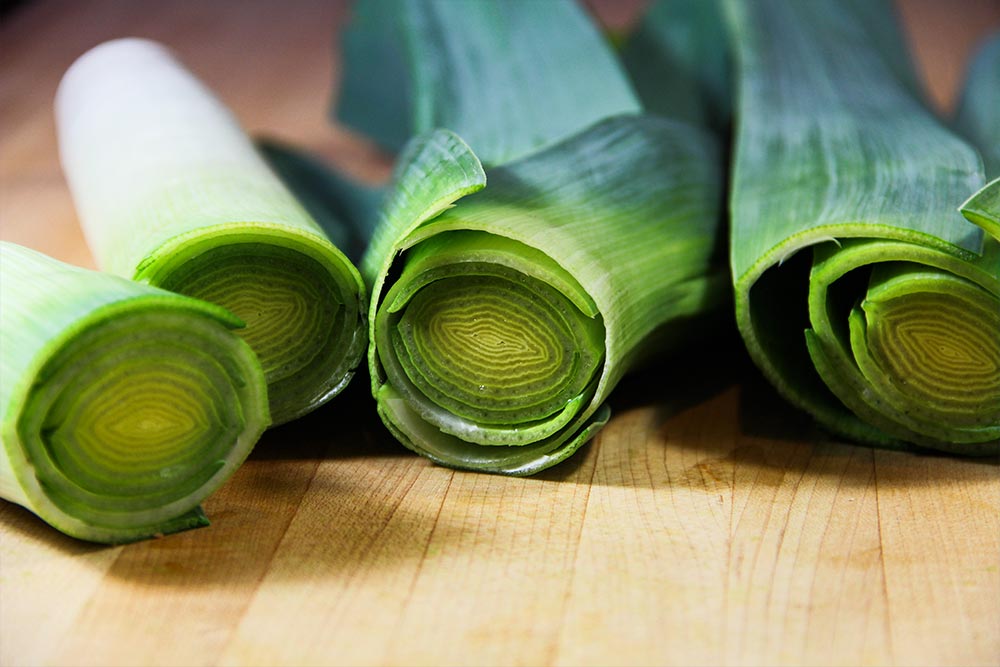
Then, I sliced the bottom, white half, lengthwise.
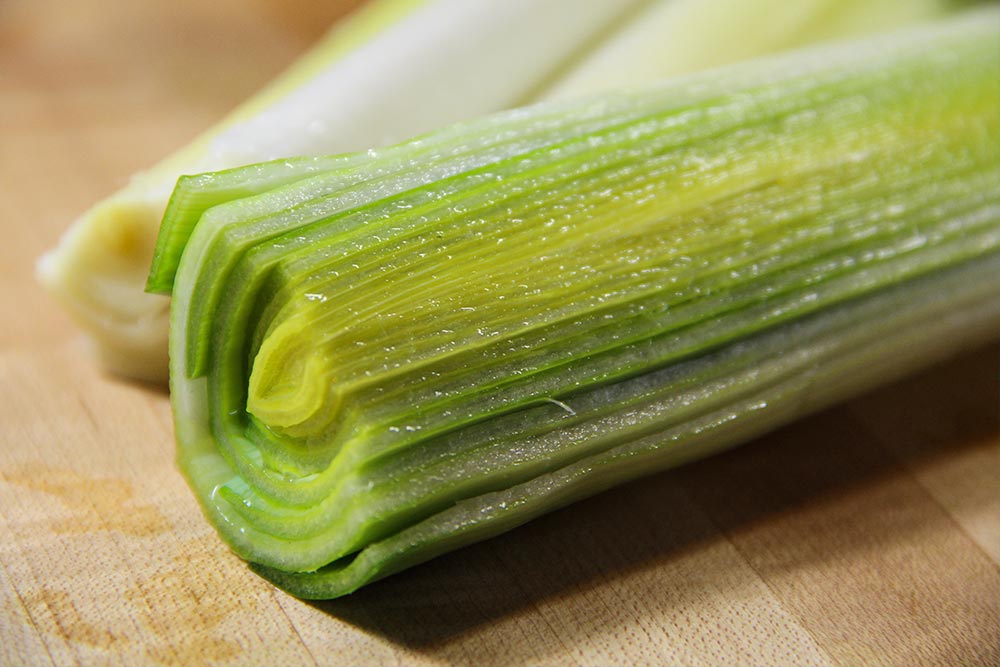
After I sliced them, I ran each piece under some running water to clean any dirt out of them. These types of vegetables have a tendency to grow with sand attached to their insides. To clean them, all I did was hold them under the water while continuously fanning the layers with my fingers.
Once I was finished cleaning them, I cut each half into thirds vertically.
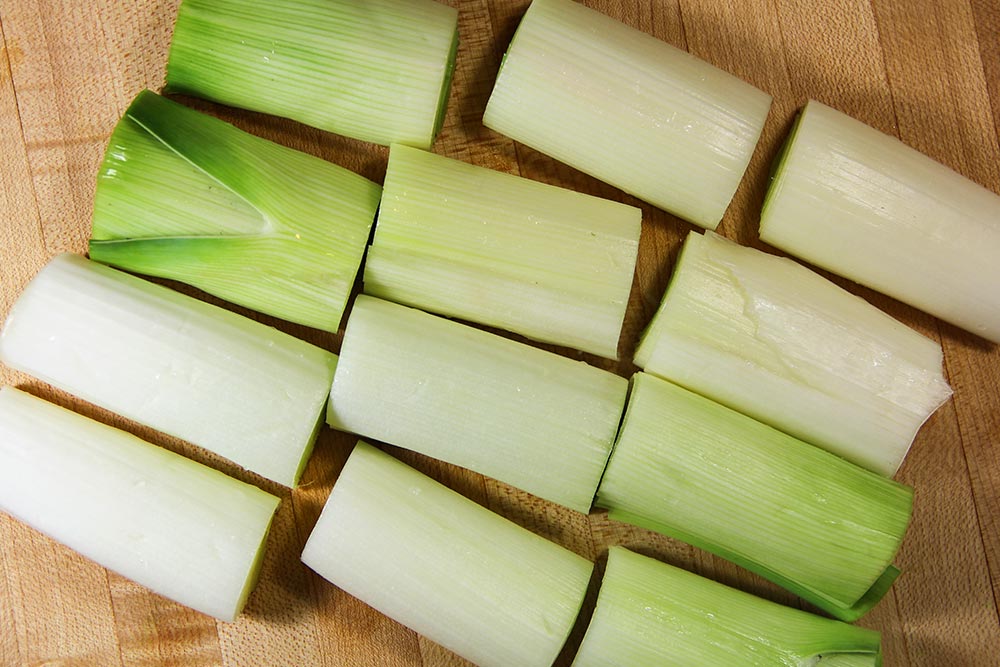
Finally, I julienned them like I did the carrots above.
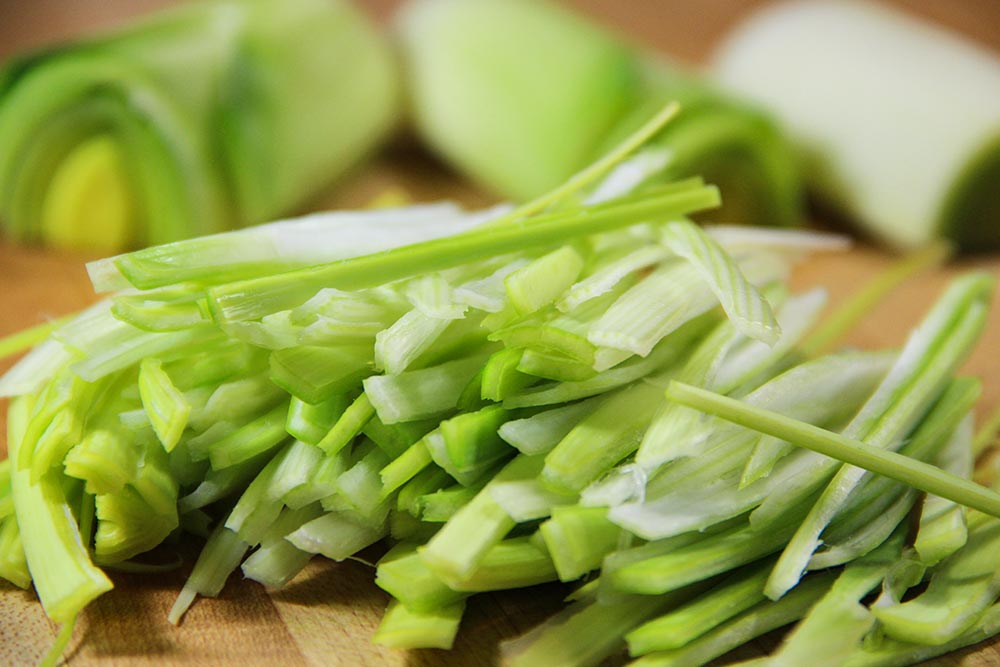
Prepare Butter Mixture
To prepare the butter mixture, I placed the 4 tablespoons of butter I set aside earlier into a bowl. Then, I added 1/4 teaspoon of the lemon zest, half (1 teaspoon) of the minced garlic, all of the minced (or dried) thyme, 1/4 teaspoon of regular salt and 1/8 teaspoon of ground black pepper to it.

Now, the original recipe calls for adding only half of the garlic in this step (like I mentioned above). They suggest that we use the other half (raw) to place as a topping on the fish after it’s cooked. Since I don’t enjoy biting into raw garlic, if I prepare this dish again, I’m going to use both teaspoons in this step. I like eating cooked garlic much more.
After I was finished combining all the ingredients for this step, I mixed them together with a spoon. I set this aside for later use.
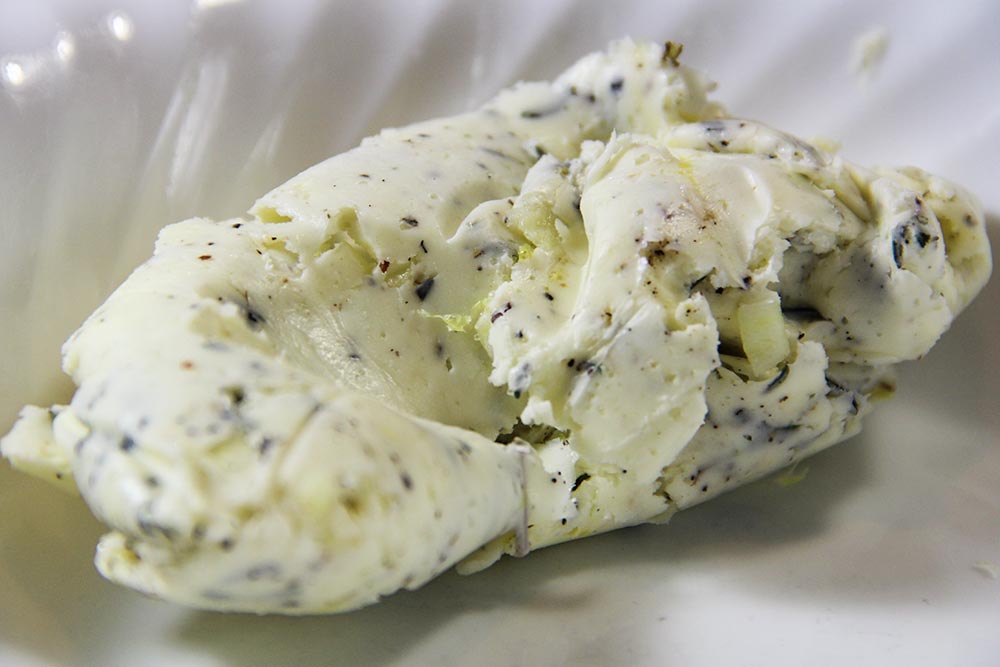
Combine Parsley, Lemon Zest & Garlic
Again, if I use this recipe in the future, this step will only consist of combining all of the parsley and the remaining lemon zest in a bowl.

Season & Toss Carrots & Leeks
For this step, I combined all the carrots and leeks into one bowl, salted and peppered them to taste and then tossed them to mix everything up.


Pre-heat Oven
You’ll be placing the food tray on the middle-lower rack, so adjust accordingly. Also, at this point, I turned my oven on to pre-heat at 450 degrees.
Prepare Aluminium Foil
Since this recipe serves 4 people, 8 pieces of 12″x12″ aluminum foil are necessary. I cut each piece and stacked them on top of each other.
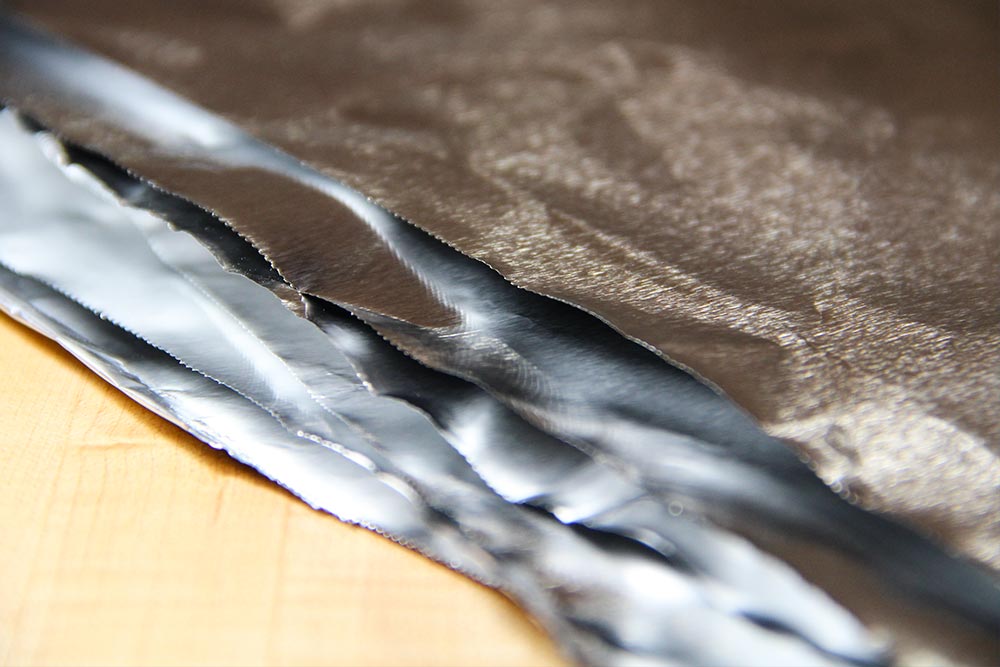
After this, I took 4 pieces and arranged them side by side on the table.
Place Carrots, Leeks & Wine on Foil
One the foil was on the table, I placed a quarter of the carrot and leek mixture on each one (in the center, as tightly as possible).

After each of the 4 pieces of foil was full of carrots and leeks, I added one tablespoon of white wine to each. I just poured it from the spoon on top of the mixture.
Add Cod to Carrots & Leeks
At this point, I took each of the already pieced out portions of cod and added them right on top of the carrot and leek piles on the foil.

Once they were there, I seasoned each one with table salt and black pepper.
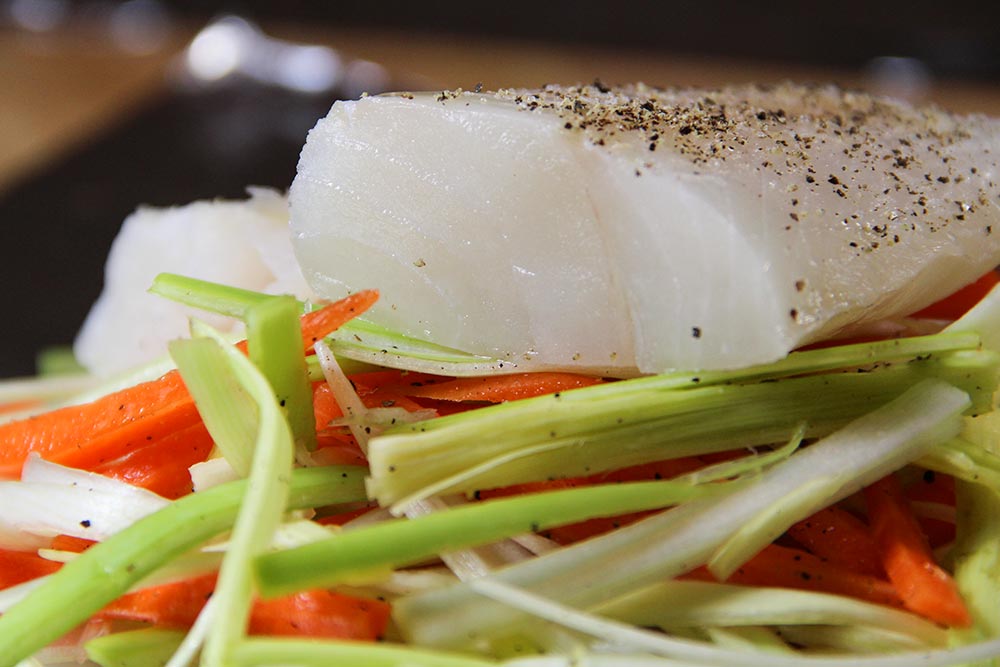
Add Butter Mixture to Cod
After the cod was seasoned, I cut the butter mixture into 4 parts and added one to each fillet.
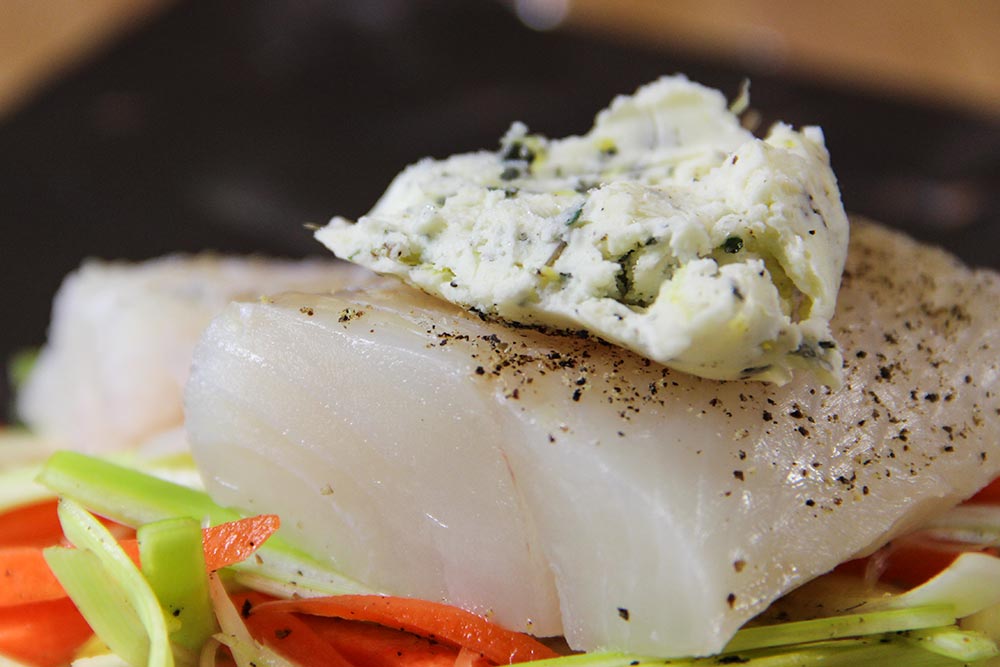
Seal the Foil
When each of the tablespoons of butter were on top of their respective pieces of cod, I sealed each piece of foil into a pouch. I did this by adding each of the remaining pieces on top of the fish and folded the edges. I folded a few times to make sure the seal was strong. The vapor inside these pouches expands as it cooks, so a tight edge is important.

Place Foil On Baking Sheet & Cook
I then placed all 4 foil pouches on one baking sheet and slid the sheet into the hot oven. I let cook for exactly 15 minutes. Once the timer was up, I removed the pouches, opened them with scissors and used a spatula to remove the contents to plate.
Add Parsley Mixture to Cooked Cod
Lastly, I added a quarter of the parsley, lemon zest and garlic mixture right on top of each piece of cod. This is what I ended up with.
The Final Product
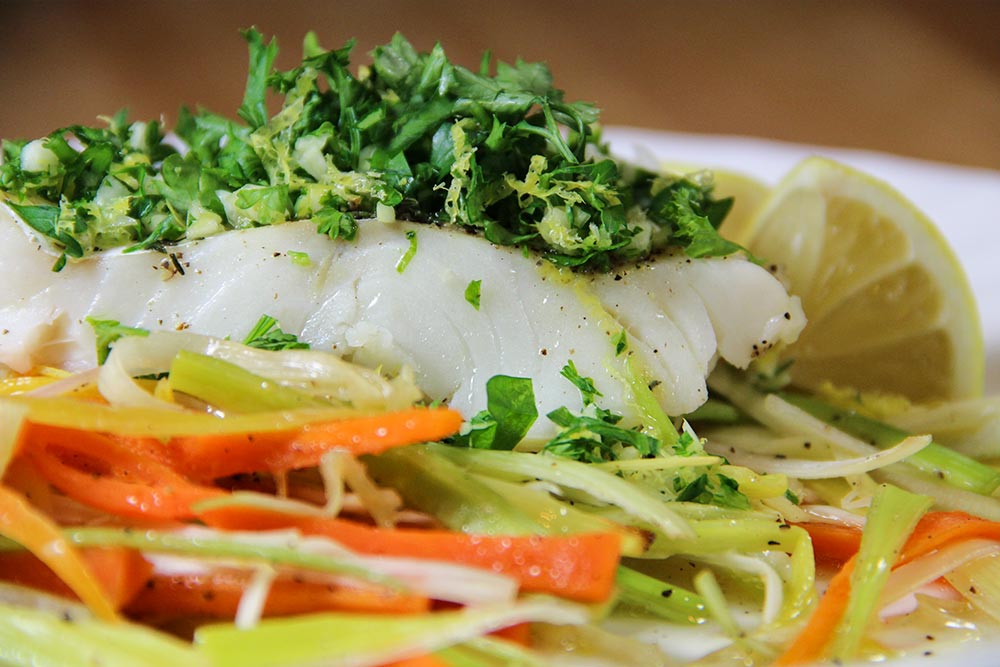
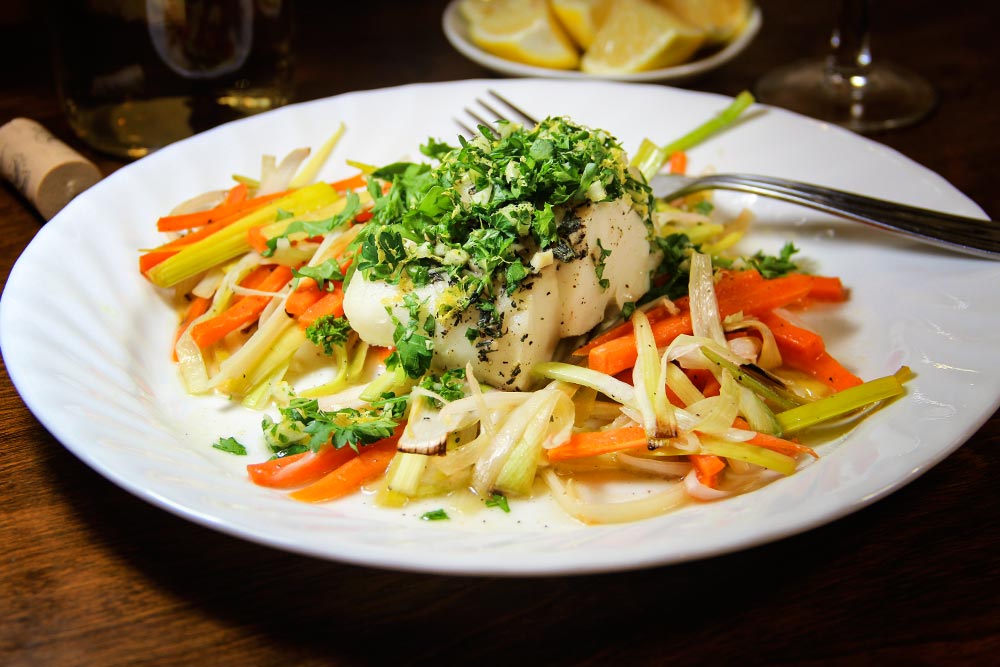
I added two pieces of lemon to each plate and tasted what I had prepared. It’s very good. Like I said, it’s a light, springy dish.
I know there seems like there are a lot of steps for this recipe. There really aren’t. Once you do it, you’ll see that the next time will be a breeze. I’d say go for it. Try this recipe and let me know what you think.
——
If you’ve enjoyed today’s post and found it helpful, please share it with a friend. Also, if you’d like to continue reading and would like our posts sent directly to your email inbox, simply sign up for our newsletter. We’ll send each and every post directly to you. Thanks!
This looks really tasty!! I have to say that after all the calories I consumed in December, light dishes like this totally appeal to me.
I agree! As I was preparing this one, I kept saying how “not bad” it was going to be for me. Thanks for the comment!
Jay
How can I print the recipe?
How do I print the recipe without all the pictures?